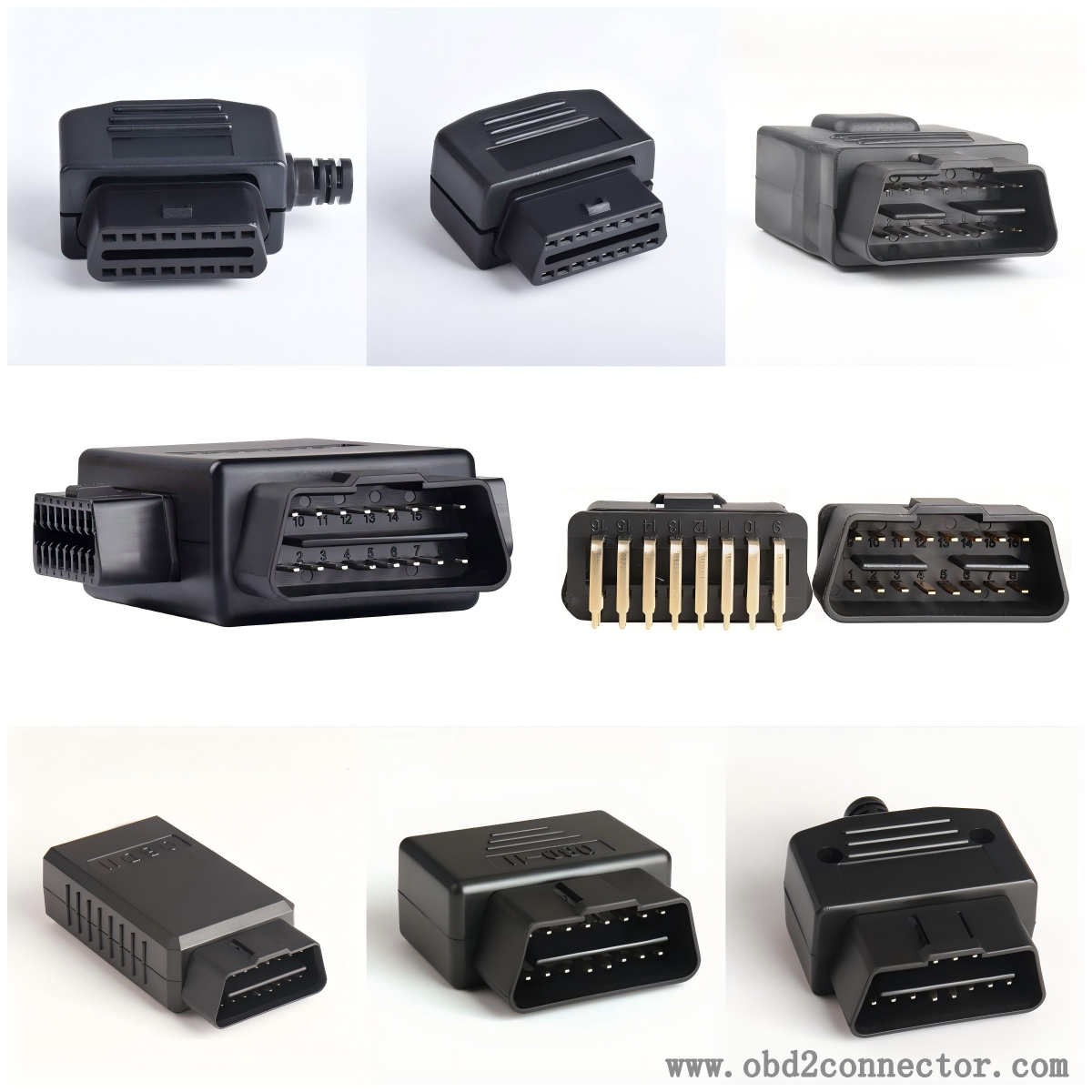Factors affecting the data transmission speed of OBD2 connector
The data transmission speed of OBD2 connector is affected by various factors, including protocol type, hardware performance, complexity of vehicle electronic system, and electromagnetic environment, as follows:
Protocol
Different OBD2 communication protocols have different data transmission rates.
hardware performance
Connector quality: High quality OBD2 connectors can provide more stable electrical connections, reduce interference and loss in signal transmission, and thus help improve data transmission speed. If the pins of the connector have poor contact, the internal circuit is damaged, or the impedance is mismatched, it can cause errors or delays in data transmission.
Diagnostic equipment performance: The processing capability and interface performance of diagnostic equipment connected to OBD2 connectors (such as automotive fault diagnosis devices, smartphones, etc.) can also affect data transmission speed. Devices with strong performance can receive, process, and display data transmitted from the OBD2 connector faster, while devices with poor performance may become bottlenecks in data transmission, resulting in delayed data processing and slow transmission speeds.
Vehicle Electronic Control Unit (ECU) Performance: The vehicle's ECU is responsible for collecting and processing data from various sensors, and communicating with external devices through the OBD2 interface. If the performance of the ECU is insufficient or the workload is too high, it may not be able to send data to the OBD2 interface in a timely manner, thereby affecting the data transmission speed.

data size
When a large amount of data needs to be transmitted, such as simultaneously reading real-time data from multiple sensors or conducting complex fault diagnosis, the data transmission speed will be affected. Due to the limited bandwidth of the OBD2 interface, a large amount of data needs to be transmitted in a time-sharing manner, which can result in longer transmission times for each data and a decrease in overall transmission speed.
The complexity of vehicle electronic systems
The electronic systems of modern vehicles are becoming increasingly complex, including multiple ECUs and a large number of sensors. Frequent data exchange and coordination between these ECUs may occupy some bandwidth of the OBD2 interface, thereby affecting the data transmission speed with external diagnostic devices. In addition, complex electronic systems may also generate more electromagnetic interference, which can have a negative impact on the data transmission of OBD2 connectors.
electromagnetic environment
There are various electronic devices and circuits inside the vehicle that generate electromagnetic fields. If the OBD2 connector does not have good electromagnetic shielding measures, these electromagnetic fields may interfere with data transmission signals, causing signal distortion or errors, thereby reducing data transmission speed. External electromagnetic interference sources, such as nearby radio transmission towers, high-voltage power lines, etc., may also affect the OBD2 data transmission of vehicles.
Software and Drivers
If there are vulnerabilities or incompatibility issues in the software and OBD2 connector drivers on the diagnostic device, it may cause abnormal data transmission. For example, software may not be able to correctly recognize the OBD2 protocol, or errors may occur during data processing, which can affect transmission speed and data accuracy. Timely updating software and drivers can optimize data transmission performance and solve potential problems.